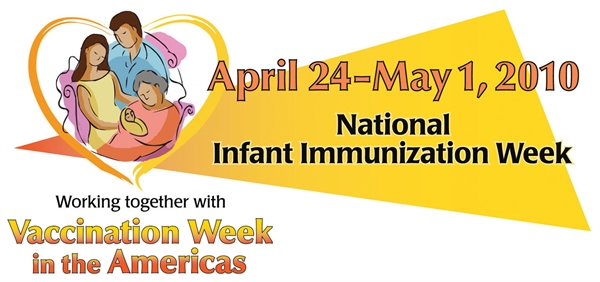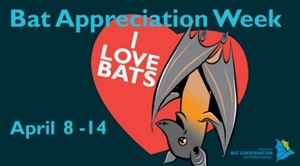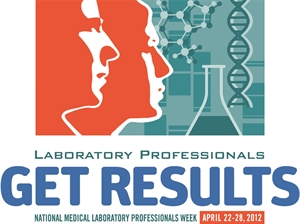National Infant Immunization Week on April, 2024: What is better OPV OR IPV ? Is Pulse Polio campaign and OPV Drops different from each other?
National Infant Immunization Week 2024. Sanofi Pasteur Celebrates the National Infant Immunization Week ... Infant Immunization Week
As an Amazon Associate I earn from qualifying purchases.

Oral polio vaccine (OPV) has been the choice for routine immunization in over 120 countries that have eliminated poliomyelitis. Following the same experience, India is also using OPV as routine immunization and pulse polio immunization as well in order to become polio free. OPV has few advantages like low cost, event to administer, inducing gut immunity and herd effect, which interrupt wild poliovirus circulation. However by using OPV India was able to control the disease but failed to achieve target of polio eradication by year 2000. So few questions were raised regarding its efficacy, administration strategy, safety concerns, choice of vaccine for individual protection, eradication & vaccine schedule etc.
Efficacy concerns: Various studies from developing countries suggest that after 3 doses of OPV, the mean proportion of infants with detectable serum neutralizing antibodies level was only 73% (36-99%) for type-1, 90% (71-100%) for type-2 & 70% (40-99%) for type-3 polio virus. Data suggests that there is wide variation among OPV vaccines in developing countries. These findings were later confirmed by randomized trials in Brazil & Gambia. Study from India found that with 5 doses of OPV at an interval of 4 weeks, seroconversion rates are 88.7%, 93.5% & 96.5% for type 1, 2 & 3 respectively. This sub optimal seroconversion was related to many factors including - interference with other enteroviruses, inhibition of type 1 & 3 virus from type 2 virus, diarrheal illnesses & presence of maternal antibodies. Inspite of routine use of OPV supplemented with mass immunization achieving, immunization coverage of 85-90%, Gaza & Wert banks continued to experience polio outbreaks indicating its inefficiency in controlling the disease.
Vaccine Associated Paralytic Poliomyelitis (VAPP): VAPP though rare is a serious complication of OPV. Vaccine virus has the ability to mutate to become neurovirulent & cause paralytic illness in the subject or its contacts. From 1980 to 1998, 152 cases of paralytic polio were reported from USA of which 95% (144) were related with oral polio vaccine administration. Risk of VAPP was estimated as 1 case per 1.5-2.2 million doses administered in 1989 to 1991. Data from UK suggested VAPP risk as 1 case per 1.4 million doses of OPV administered from 1985-1991. There is higher risk of VAPP following first dose of OPV and in children with B-cell immunodeficiency. Study in India by Kehler KA et al concluded that the risk of VAPP was 1 per 4.1-4.6 million dose administered. Recipient risk was 1 per 12.2 million doses. 1st dose recipient risk was 1 per 2.8 million doses & subsequent dose recipient risk was 1 case per 13.9 million dose administration which are much lower as compared to other countries.
National polio surveillance project defined VAPP as AFP cases in whom -
Onset of paralysis occurred during 1999.
History of vaccine administration before the onset of paralytic illness.
Residual weakness 60 days after onset of paralysis and
Single vaccine related poliovirus was isolated in stool samples without isolation of wild poliovirus.
Solutions put forward: India has gained remarkable success in controlling poliomyelitis through pulse polio immunization. Recent surveillance reports indicate that most of the wild virus is in circulation in Northern India (esp. UP, Bihar) causing paralytic polio. Kerala is polio free from some time so epidemiology has changed but the policy & strategy to eradicate polio are still the same across the country. So few strategies have been put forward in order to tackle this situation. It is proposed that, in the areas where polio virus (wild) is not circulating. IPV (Injectable Polio Vaccine) should be commenced and areas with high incidence of polio should continue to use oral polio vaccine. So that IPV can be introduced sequentially across the country in order to reduce VAPP.
Before 1997 in US, OPV was used as routine immunization 2 doses of OPV was recommended. But since 2000 only IPV is used for polio immunization.
Inactivated Polio Vaccine (IPV): IPV is highly immunogenic with > 90% of vaccine recipients developing protecting antibodies following 2 doses of vaccine and > 99% after 3 doses. These antibodies persist for several years after primary immunization with IPV. Study in Tamil Nadu (India) comparing efficacy of OPV & IVP has shown higher efficacy with latter (66% Vs 92%). There were initial concerns that IPV induces lower level of mucosal immunity than OPV & it doesn't get excreted in the stools of vaccines so it may be less efficacious in preventing wild virus circulation. But now studies have shown that enhanced IPV (eIPV) induces adequate amount of IgA formation in nasopharyngeal and intestinal secretions almost equivalent to that induced by oral polio vaccine.
Schedule: Many schedules have been tested e.g. eIPV only, sequential eIPV - OPV in combination with DPT and as part of a number of investigational combin

suffering from chronic hepatitis b?
There are four medications currently approved by the Food and Drug Administration (FDA) for treatment of active hepatitis B infection.
Alfa Interferon (Brand names: INTRON A, INFERGEN, ROFERON): Interferon is an antiviral agent with antiproliferative and immunomodulatory agent that is administered by subcutaneous injection daily or three times per week, for 12-16 weeks or longer. With adequate teaching, the injections can easily be administered at home by patients. High pretreatment ALT and lower levels of HBV DNA are the most important predictors of response to alfa interferon therapy. Virologic response to alfa interferon occurs in less than 10 percent of patients with normal ALT. A sustained response can be seen in 15 - 30 percent of patients with HBeAg-negative chronic hepatitis B and less than half of the responders show sustained clearance of HBsAg.
Side Effects: Depression – this is more commonly seen in patients with a prior history of depression. Muscle aches, fatigue, and low grade fevers are common and may be minimized by taking Tylenol (acetaminophen). Occasionally, patients may develop low white blood cell count, headaches, irritability, and thyroid dysfunction. Underlying autoimmune disorders may also be unmasked.
b) Lamivudine (Epivir-HBV, 3TC): inhibits hepatitis B viral DNA synthesis. It should be taken orally, once daily. It is approved for use in adults and children and is usually tolerated well. Occasionally, it may cause a rise in the liver enzyme ALT. Pretreatment ALT is an important predictor of response, with HBeAg conversion occurring in over a third of patients when the ALT is greater than five times normal. While Lamivudine benefits patients with HBeAg-negative chronic hepatitis B, the vast majority of patients relapse once treatment is stopped.
Adefovir dipivoxil (Hepsera): inhibits DNA polymerase activity and reverse transcriptase. This drug is administered orally on a daily basis and is typically well tolerated. It can be associated with kidney dysfunction, particularly if used in high doses. The optimal duration of therapy is not yet clear. About 50 - 60 percent of HBeAg positive and negative hepatitis B patients respond to this medication; data regarding the durability of response is awaited.
Baraclude (Entecavir): is the latest drug approved by the FDA for treatment of chronic hepatitis B. It works by inhibiting the function of Hepatitis B virus polymerase. Side effects include headache, fatigue, dizziness, nausea, and transient elevation in liver enzymes. This drug is taken orally, once daily and the optimal duration of therapy is not yet established.
In patients with severe liver dysfunction, a liver transplant may be required.
Prevention of Hepatitis B
Current public health efforts to prevent the disease have focused on vaccinating people in high-risk groups and, increasingly, vaccinating all children and adolescents.
Those at greatest risk are: intravenous drug abusers; heterosexuals with multiple partners; homosexual men; health care workers; and children born to immigrants from China, Southeast Asia, and other areas where hepatitis B is very common.
Two companies have a hepatitis B vaccine license for use in the U.S. and both are produced by recombinant DNA technology. As part of a national effort to eliminate hepatitis B transmission, the Advisory Committee on Immunization Practices, with the concurrence of the American Academy of Pediatrics and the American Academy of Family Physicians, has recommended that all infants receive hepatitis B vaccine as part of their childhood immunization schedule.
Three doses of vaccine are required to achieve effective immunization and will induce adequate antibody in 80 - 95 percent of persons who get three doses. The vaccination schedule most often used is three intramuscular injections, with the second and third doses administered at one to six months after the first.
The first dose of hepatitis B vaccine is given soon after birth before the infant is discharged from the hospital or in the first two months of life. The second dose is given between one and two months after the first and the third at six to 18 months of age. Since 1999, two-dose vaccines are available and required in some states for adolescents age 11 to 15 years.
Infants born to mothers infected with hepatitis B virus should be treated with hepatitis B immune globulin and hepatitis B vaccine within 12 hours of birth, with the second and third doses of vaccine given at one and six months of age.
Adults and older children should receive the injections in the deltoid. Infants should receive the injections in the thigh. Buttock injection should never be used.
Other means of prevention include:
(if carrier) Cover open wounds, don't share razors or manicure tools.
Practice safe sex
Don't share needles, razors, toothbrushes, manicure tools or other items that could bear contaminated b

does anyone know what side effects you get from a tetnus shot?
Tetanus is easily preventable through vaccination. All children should have a series of five doses of DTaP, a combined vaccine that offers protection against diphtheria, tetanus, and pertussis, before the age of seven, according to the Centers for Disease Control and Prevention's national immunization guidelines, the Advisory Committee on Immunization Practices, the Committee on Infectious Diseases of the American Academy of Pediatrics, and the American Academy of Family Physicians. Children will not be admitted to school without proof of this and other immunizations.
The DTaP (diptheria, tetanus, accellular pertussis) vaccine should be given at ages two months, four months, six months, 15 to 18 months, and four to six years. DTaP is the preferred vaccine for children up to the age of seven in the United States; it has fewer side effects than DTP and can be used to complete a vaccination schedule begun with DTP. DTaP was first approved by the Food and Drug Administration (FDA) in September 1996. In December 1996, it was approved for use in infants. Between the ages of 11 and 13, children should have a booster for diphtheria and tetanus, called Td.
Adults should have a Td booster every 10 years. Statistics from the Centers for Disease Control and Prevention (CDC) show that fewer than half of Americans 60 years of age and older have antibodies against tetanus. The CDC suggests adults may be revaccinated at mid-decade birthdays (for example, 45, 55). Adults who have never been vaccinated against tetanus should get a series of three injections of Td over six to 12 months and then follow the 10-year booster shot schedule.
Side effects of the tetanus vaccine are minor: soreness, redness, or swelling at the site of the injection that appear anytime from a few hours to two days after the vaccination and go away in a day or two. Rare but serious side effects that require immediate treatment by a doctor are serious allergic reactions or deep, aching pain and muscle wasting in the upper arms. These symptoms could start from two days to four weeks after the shot and could continue for months.
In early 2001, a shortage of the tetanus vaccine became evident after the pharmaceutical company Wyeth-Ayerst Laboratories decided to stop production of the tetanus vaccine, leaving Aventis-Pasteur as the sole manufacturer of the vaccine. As a result, hospitals were provided with only a minimal amount of the drug on a weekly basis-enough to vaccinate patients with potentially infected wounds and other priority cases. Despite stepped-up production efforts on the part of the manufacturer, however, a spokesperson for Aventis-Pasteur predicted that the shortage would last until the end of 2001, as the vaccine takes 11 months to produce.
Post-exposure care
Keeping wounds and scratches clean is important in preventing infection. Since this organism grows only in the absence of oxygen, wounds must be adequately cleaned of dead tissue and foreign substances. Run cool water over the wound and wash it with a mild soap. Dry it with a clean cloth or sterile gauze. To help prevent infection, apply an antibiotic cream or ointment and cover the wound with a bandage. The longer a wound takes to heal, the greater the chance of infection. If the wound doesn't heal, or, it is red, warm, drains, or swells, consult a doctor.
Following a wound, to produce rapid levels of circulating antibody, a doctor may administer a specific antitoxin (human tetanus immune globulin, TIG) if the individual does not have an adequate history of immunization. The antitoxin is given at the same sitting as a dose of vaccine but at separate sites. Some individuals will report a history of significant allergy to "tetanus shots." In most cases, this occurred in the remote past and was probably due to the previous use of antitoxin derived from horse serum.
A genus of deadly bacteria that are responsible for tetanus and other serious diseases, including botulism and gangrene from war wounds. Clostridia thrives without oxygen.
DTaP
Diphtheria and tetanus toxoids and accellular pertussis combination vaccine.
DTP
Diphtheria, tetanus, and whole-cell pertussis vaccine.
Td
Tetanus and diphtheria vaccine.
Toxin
A poisonous substance that flows through the body.
Wound
Any injury that breaks the skin, including cuts, scratches, and puncture wounds.


















